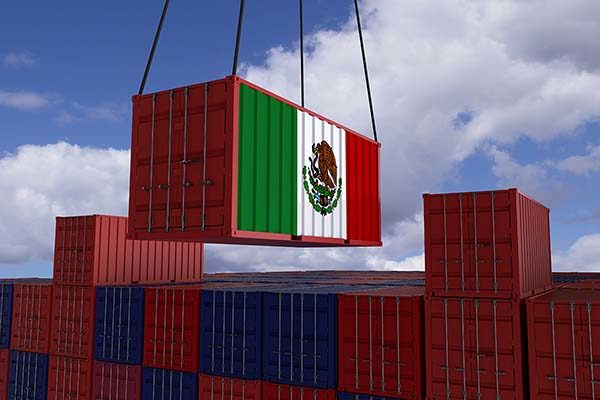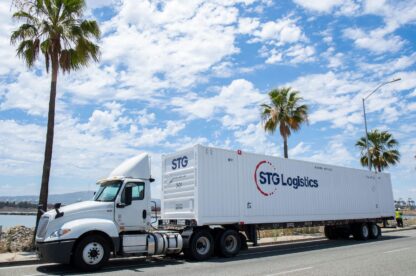American companies are moving manufacturing from China to Mexico. Here’s what has to change for the nearshoring revolution to succeed

The COVID pandemic may be behind us, but its economic fallout is still unfolding to our south: manufacturing in Mexico is booming. American companies started moving their supply chains from Asia during the Trump administration thanks to tariffs on China and a free trade deal with Canada and Mexico. The trend, called nearshoring, accelerated when COVID shut down ports and factories across Asia, leaving U.S. brands without goods to sell.
The result: Between 2018 and mid-2023, U.S. imports from Mexico grew 35%, overtaking China this year while the latter saw imports fall 16%. Nearshoring has had many moments before this one. In the 1990s, NAFTA helped create the maquiladora system that assembles American automobiles in Mexico from parts made in America. Other mini-booms have come and gone since, with boosters of U.S.-Mexico trade sometimes overhyping the potential benefits.
This time could be different, thanks to a confluence of factors. U.S. relations with China have deteriorated and geopolitical instability has grown, with the war in Ukraine and now the eruption of violence in Israel and Gaza as two examples. That has led firms to shun supply chains that span the globe to limit the potential for disruption. Meanwhile, tariffs on Asian goods have survived into the Biden administration while NAFTA’s successor, the U.S.-Mexico-Canada Agreement (USMCA), which took effect in 2020, cemented duty-free trade across North America. All of this has left U.S. companies more eager than ever to fabricate and assemble over the southern border, where there’s a highly skilled workforce and goods take two days to reach American consumers versus two months from China.
For nearshoring to expand beyond a few key industries, however, there are four things that need to change:
Mexico must become more friendly to business. Complicated and frequently changing tax and customs rules create obstacles for American firms that want to set up shop there. One recent change to the import duties regime forced us to reconfigure our entire system for tracking the movement of goods throughout Mexico. Corruption and crime remain a big deterrent to U.S. companies that want to invest: In the first half of this year bandits hijacked 4,127 trucks in Mexico, or about 23 per day.
Mexico must encourage suppliers, not just factories. Today’s supply chains are more complex than ever. China’s advantages include an enormous workforce, low (but rising) wages, cheap land, and government-sponsored financing. The biggest impediment to American companies moving their production to Mexico, however, may be China’s vast web of raw materials and parts suppliers. Assembling a final product in Mexico when the inputs must come from China doesn’t shorten the supply chain or reduce the risks of disruption. To change that, both Mexico and the U.S. need to work together to build up a network of suppliers that will enable more investment in Mexico’s economy.
Deal transparently with a large and growing trade imbalance. One outcome of the nearshoring boom has been that as trade with Mexico has grown, so has the trade deficit. Mexico exported $131 billion more in goods to the U.S. in 2022 than the U.S. sent to Mexico, a deficit that grew by 24% in just one year. As a result, moving goods north costs much more than moving them south, and backlogs and delays are becoming more prevalent. U.S. and Mexican policymakers and the logistics business community need to work together to make moving goods northbound easier or else investment will stall.
Improve infrastructure on both sides of the border. The busiest railroad border crossing in North America is a bridge at Laredo, Texas, and consists of a single track originally built in 1920. Northbound and southbound trains alternate every four hours. The bridge’s owner, Kansas City Southern Canadian Pacific, plans to open a second lane by the end of this year, allowing trains in either direction to flow around the clock. Mexico, for its part, has made some splashy investments in signature infrastructure projects, but basic services—such as water, electricity, and roads—often lag in places where they could most benefit from and by investment from U.S. companies. Both countries could be doing more to improve the physical assets that facilitate trade.
Tariffs, a global pandemic, subsidies, and relations with China have all conspired to dramatically boost trade between the U.S. and Mexico. A relationship that once centered almost entirely on automobiles, appliances, and electronics is now expanding into other sectors. That’s good news for Mexico’s skilled workforce and American brands and consumers. If America and Mexico want the nearshoring trend to continue, though, they need to make trade a priority instead of assuming that China’s role as the world’s factory will inevitably end.


